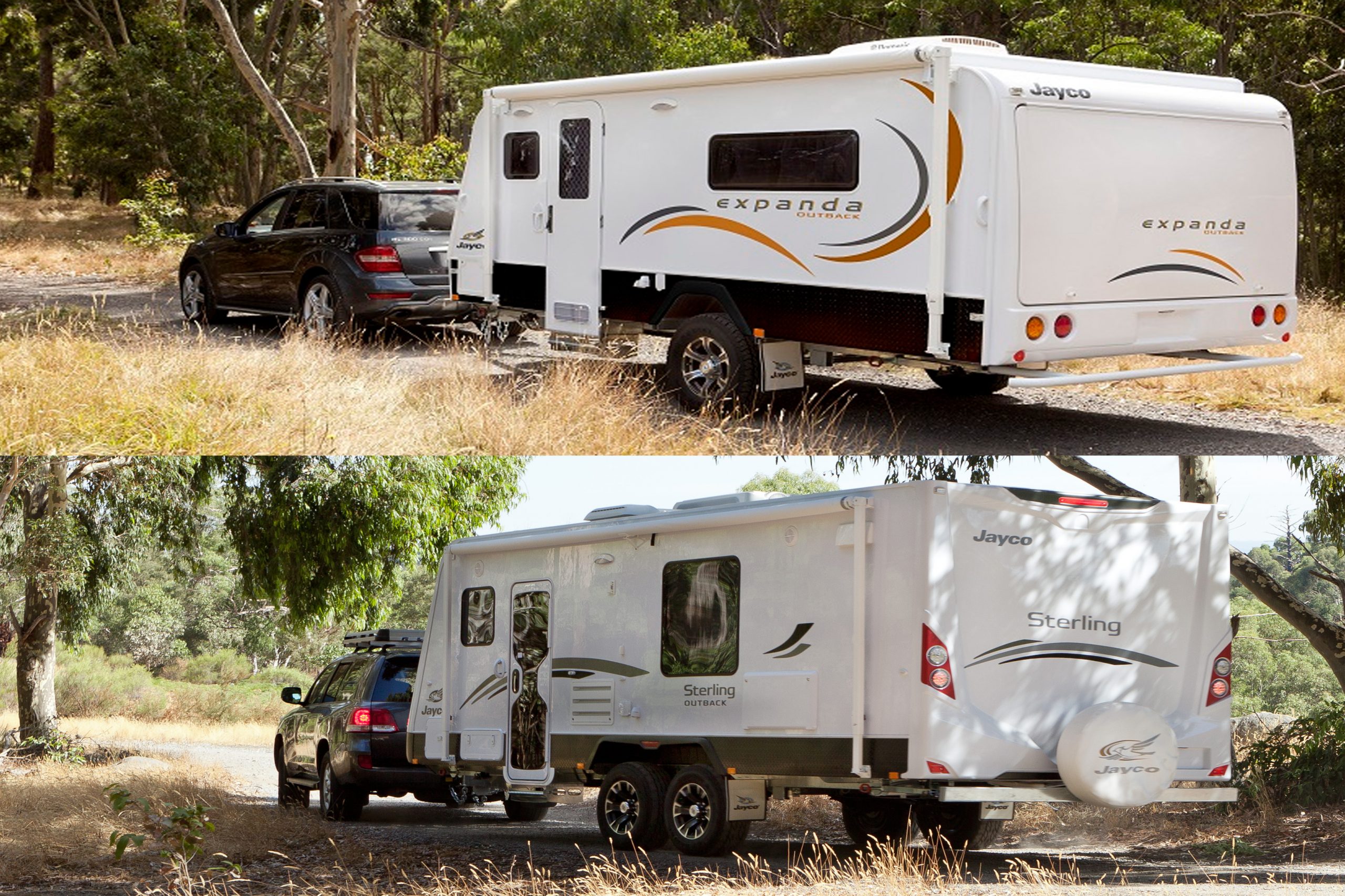The road is wet, greasy and downhill and your brain is cold. With a heavy caravan in tow, there are perhaps 3000 good reasons why this scene is potentially dangerous. Unless you’re a professional driver accustomed to having multiple trailers behind you, braking is the one area where most caravanners can easily come unstuck.
Do the math. Most of the new breed of ‘3500kg-capable’ crew-cab utes weigh not much over two tonnes, whereas the caravans they tow, when fully laden with water, clothes, food and toys, usually tip the scales as much as a tonne more. To make matters worse, unless you fill the load bay with sheep, sand bags or the like, there’s not much weight over the ute’s rear wheels, putting it at the mercy of the ‘push’ behind it.
In Britain, this would be illegal, as – sensibly – their laws demand that the towed vehicle may not weight more than the tow car. In fact, the UK Caravan Club that runs its annual ‘tow car of the year’ awards insists that caravans weigh no more than 80 per cent of the tow tug.
Here we don’t concern ourselves with such trivial things, so we need to rely on technology and common sense. Here are some tips:
1. KNOW YOUR WEIGHTS
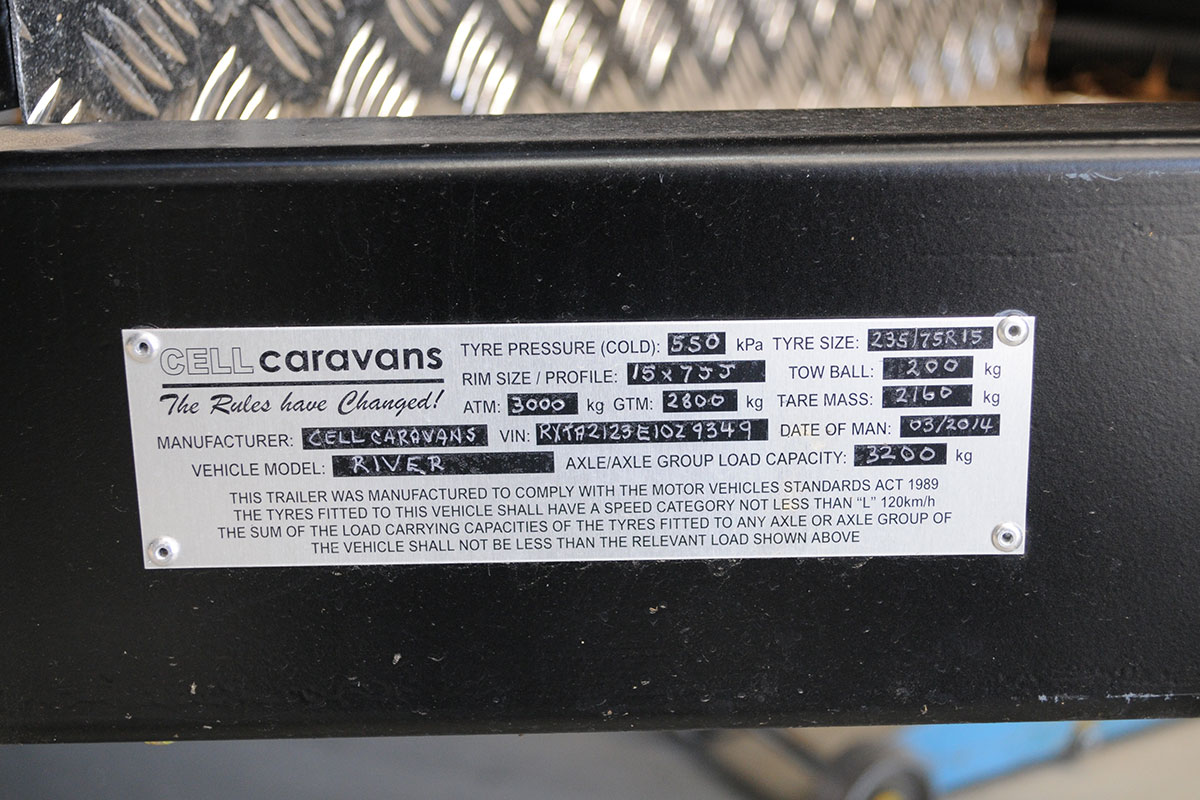
You first need to know the Aggregate Trailer Mass (ATM) of your caravan permitted by the manufacturer. This is its total travelling weight, including whatever you add as payload, such as water, gas, food and luggage and is usually stamped on a plate pop-riveted to the A-frame or inside the boot.
Then you need to know the tow ball weight of your fully loaded caravan. This is the weight on the back of your car (or on the jockey wheel if the van is uncoupled). You can measure this on a public weighbridge or, even better, you can use your bathroom scales or buy a device to weigh it at home before you hitch up for a trip. Usually you can expect the tow ball weight to be around 10 per cent of the ATM.
2. USE A WEIGHT DISTRIBUTION HITCH (WDH)
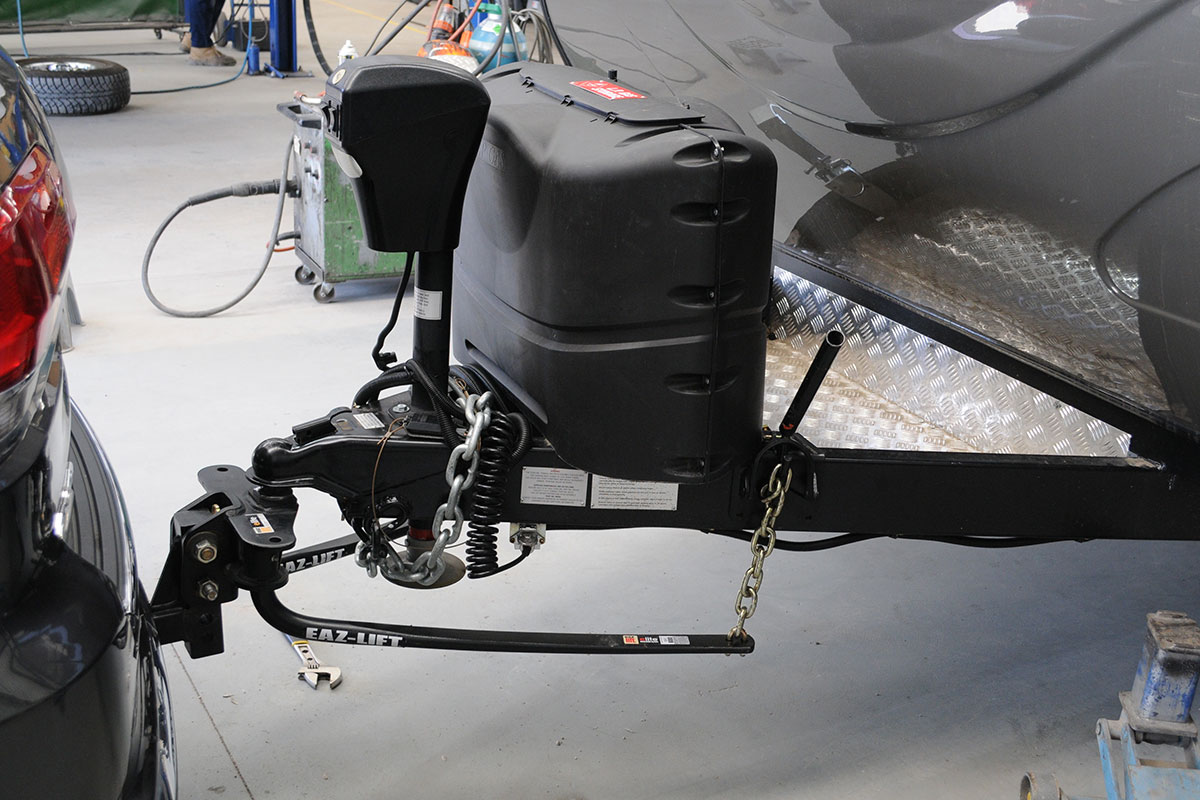
Where the tow ball weight exceeds 150kg, it is generally recommended that you use a heavy-duty weight distributing hitch. When fitted correctly, this will ensure that your tow vehicle stays level when hitched and will allow its front brakes to do their job in pulling it up.
Without such a hitch, the ball weight of the caravan will place extra load on the rear suspension and lighten the weight on your tow car’s front wheels. This means they will tend to lock up earlier under heavy braking – particularly in the wet. Your vehicle’s anti-lock braking system will try to overcome this by releasing the pressure, leading to a longer stopping distance.
When fitting a WDH, it is important to ensure your ball weight does not fall below 10 per cent of the total caravan weight to prevent sway issues that will further impact on its stability and braking ability.
3. SELECT AN APPROPRIATE TOW CAR
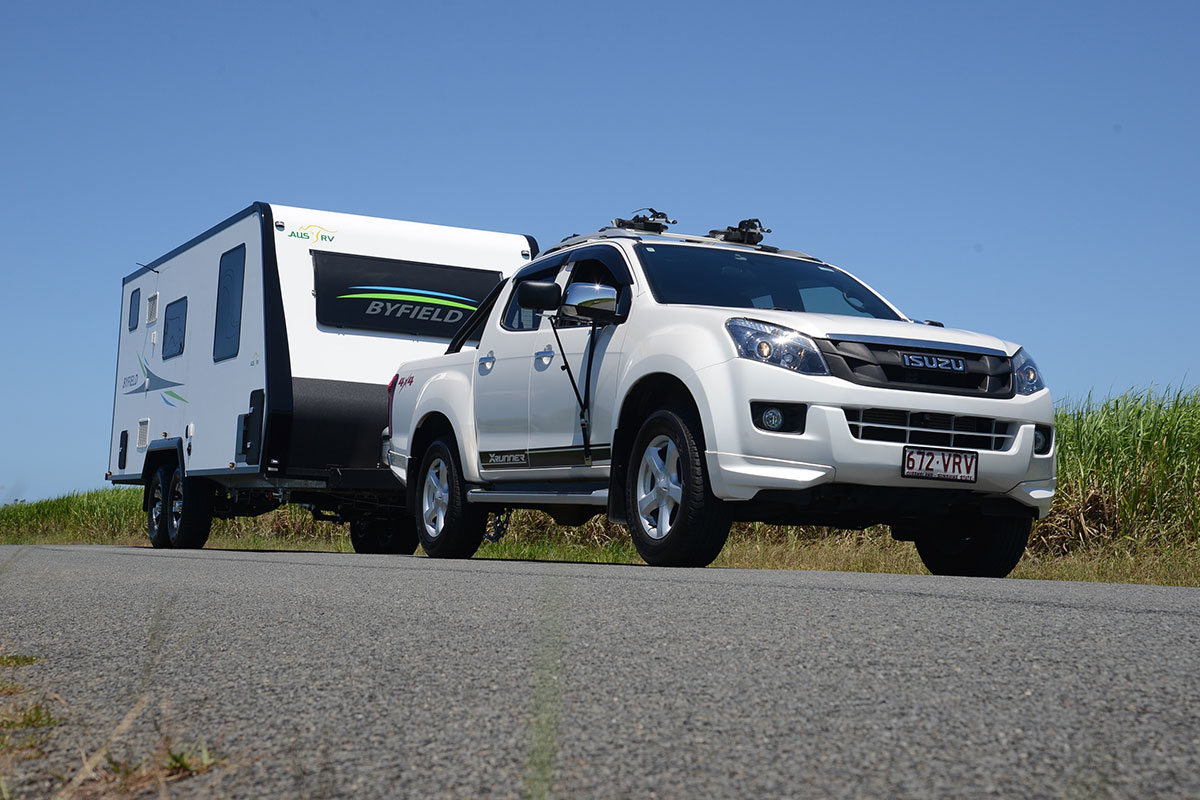
Now that you know the caravan ATM and tow ball weight, you need to look at the specifications for your potential tow vehicle: the tare (TARE) weight it is built to tow; the gross vehicle mass (GVM); the gross combination mass (GCM); its tow rating and the ball weight rating.
The caravan’s ball weight should be less than the tow vehicle’s maximum ball weight rating, and the caravan’s ATM should be less than the tow vehicles maximum tow rating. Add the trailer ATM to the tow vehicles GVM, and the combined weight should be less than the GCM. If the total of the ATM and GVM is higher than the GCM, you may still be able to tow the caravan if you don’t load the caravan and tow vehicle to their permitted maximum.
Another thing to consider is whether you need a two or four-wheel drive tow car. A 4WD is always the better choice, as even wet grass can prove challenging for a two-wheel drive ute, while 4WD is essential for traction if you are leaving the bitumen.
4. INSTALL AN ELECTRONIC BRAKE CONTROLLER
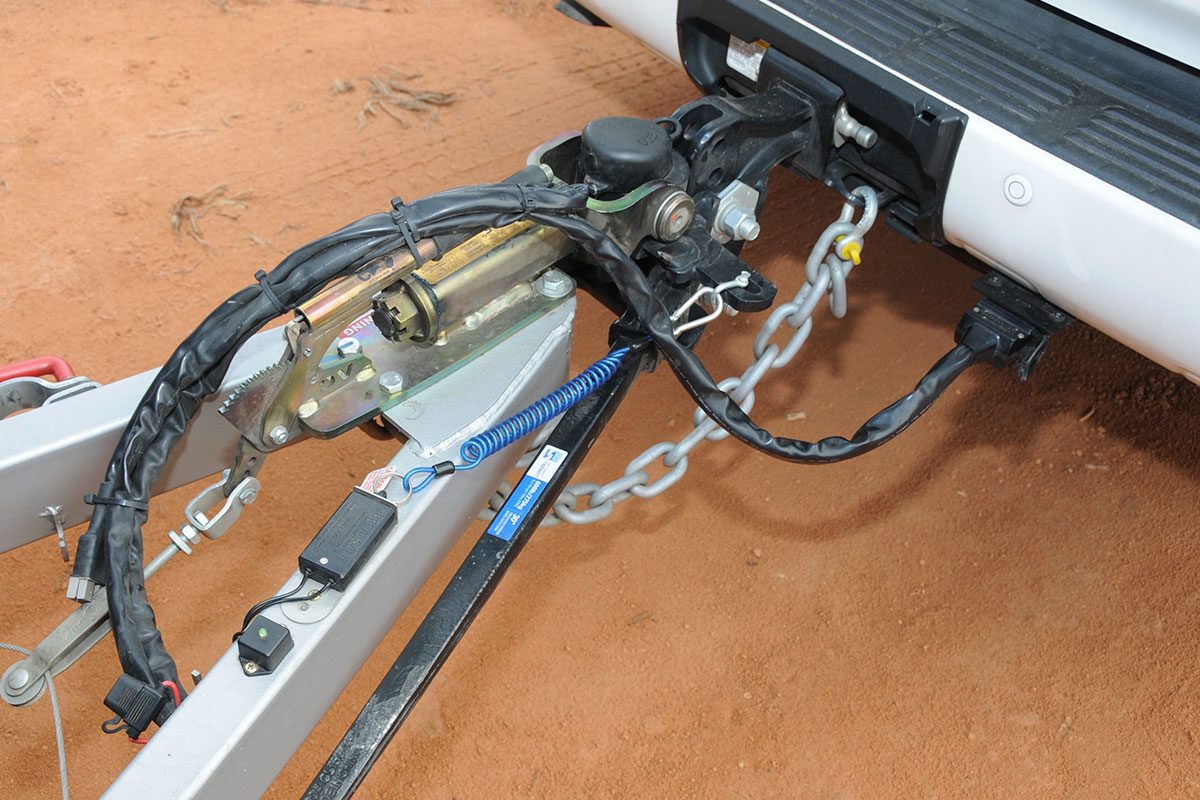
Unless you have overrun brakes fitted (vehicles under 2.0t), an in cab brake controller that facilitates the manual operation of the caravan/ trailers brakes is mandatory for any trailer that weighs more than 750kg and your caravan’s brakes will not work without one.
(Refer to VSB1 for the specific braking requirements that apply to your combination)
This device can be attached under, or in the dash of your vehicle, or sometimes in the centre console. It is wired to the car’s battery, the stop light circuit and also to the seven or 12-pin socket into which the caravan plug connects. Its installation is virtually independent of the vehicle’s electrical circuit and has no conflict with car computers or ABS Braking Systems. Installation usually takes around three to four hours depending upon the vehicle.
There are a number of different brands of controllers on the market, but all operate on similar principles. Power is fed from the vehicles stoplights into the controller then back to the caravan through the plug and socket. This allows the caravan brakes to come on automatically when you apply the vehicle brakes. The characteristics of the power flow will vary from unit to unit.
Whatever unit you have fitted, try it out on a quiet road before you set out on a trip and if the caravan wheels start to lock, slacken off the current until you can feel an even ‘tug’ when you brake your rig. This optimum setting will vary from stop-start town traffic to freeway use and from first thing in the morning, when your caravan’s brakes are cold, to later in the morning, when they have warmed up. Be prepared to change the setting from time to time depending on the conditions.
5. MAINTAIN BRAKES
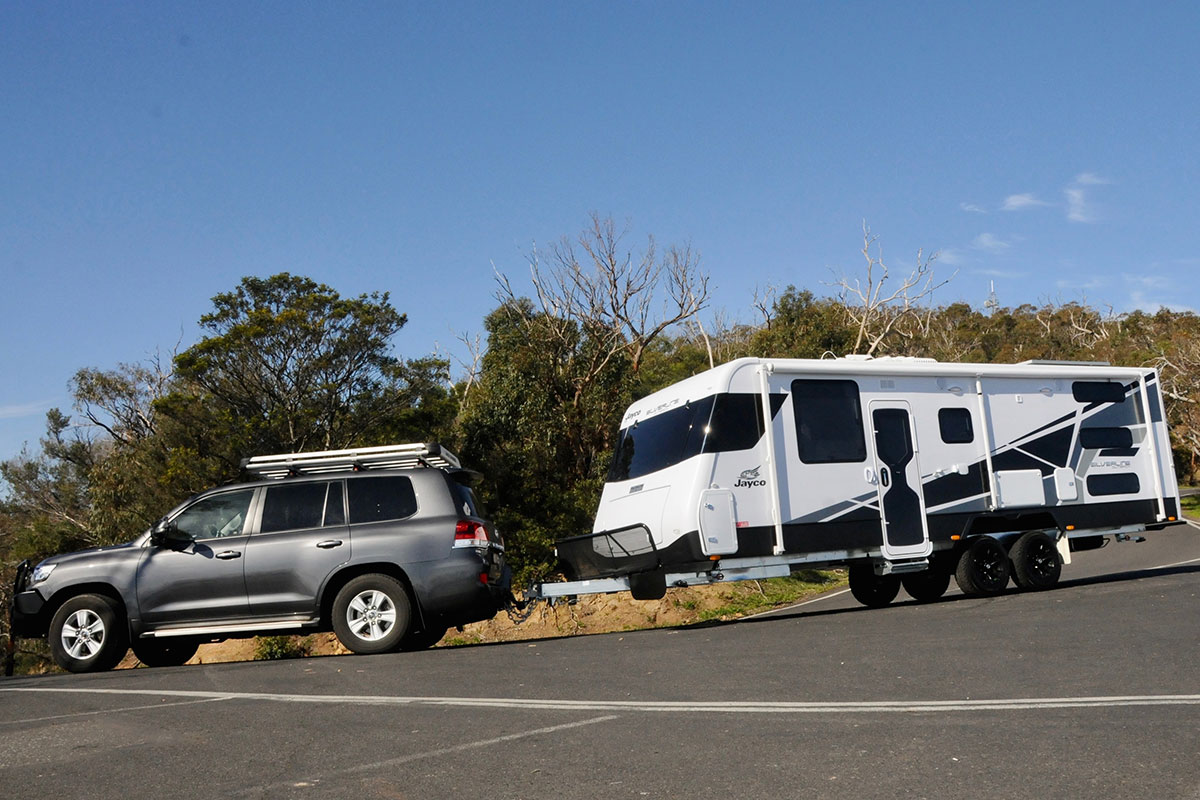
It’s a good idea to have your caravan serviced every 12 months, even if it hasn’t travelled far. Brake seals can perish over time and rust, if you have previously towed through fresh, or even worse, salt water, can do a lot of hidden damage.
Brake linings and the electric magnets that operate them can also wear out and we know of some off-road caravans that need new brake pads every 12 months.
6. CHECK TYRES
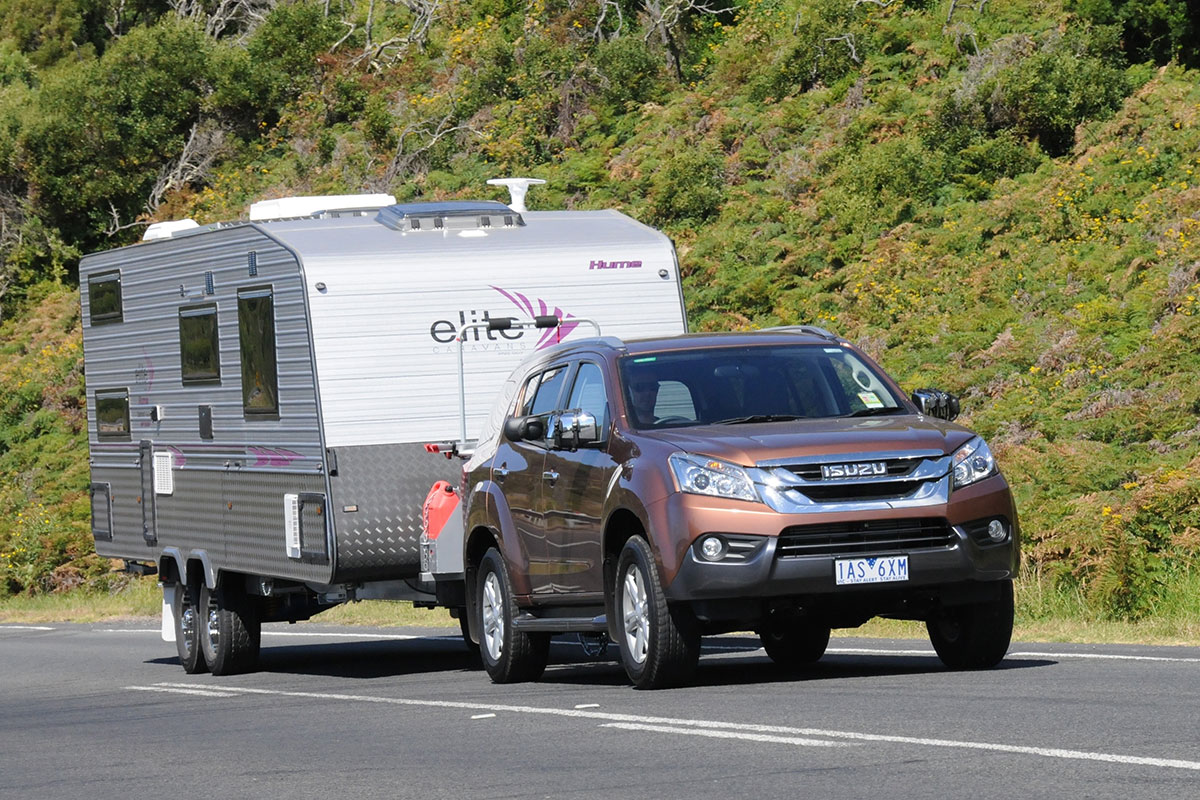
It is stating the obvious that your tyres also need attention. Wheel alignment can change and chop out your tyres if you nudge a few kerbs, while tyre sidewalls deteriorate due to standing around all day in the sun, wind, rain and cold.
Take a look at the tyre sidewall ‘stamping’ to find out when they were made (this could be on the outside or the inside of the tyre and generally after a DOT or between two DOTS).
As a rule of thumb, they are good for only 5-6 years before the rubber becomes hard and loses its grip, which is all the more important when you are trying to brake in the wet. Remember that they could have been manufactured a year or more before they were fitted to your van!
Tyre pressures are another set of numbers you should be aware of. If you can’t find any other information, set them at the car manufacturer’s fully-loaded highway pressures for the rear wheels if you are travelling on bitumen, remembering that high temperatures and fast cruising will cause their pressures to rise about 6-8psi. Over-inflation in very hot weather can just as easily lead to problems as can under-inflation. Also, ensure that the pressures match on each side of the caravan, as an imbalance here will cause the van to pull one way or the other under heavy braking.
7. LOAD THE VAN CORRECTLY
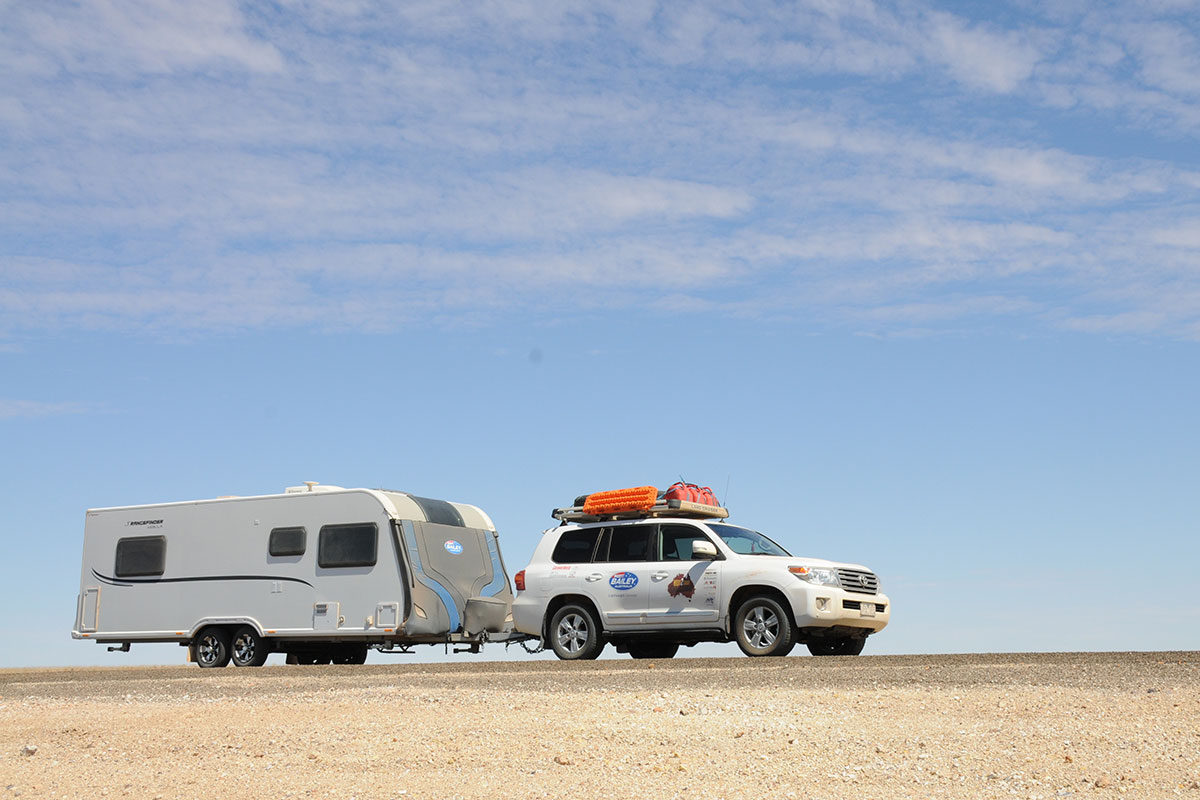
Now that you have your tow car and caravan matched, here comes the common-sense bit: load your caravan sensibly, which means any heavy items should be stored as low and as close as possible to the axle line and never in the tail. Overhead cupboards are for lightweight items such as clothes and packaged food. As long as you keep the weight evenly spread across the axle line, your ball loading and hence your caravan’s towing and braking stability should not be disturbed.
8. DRIVE TO THE CONDITIONS
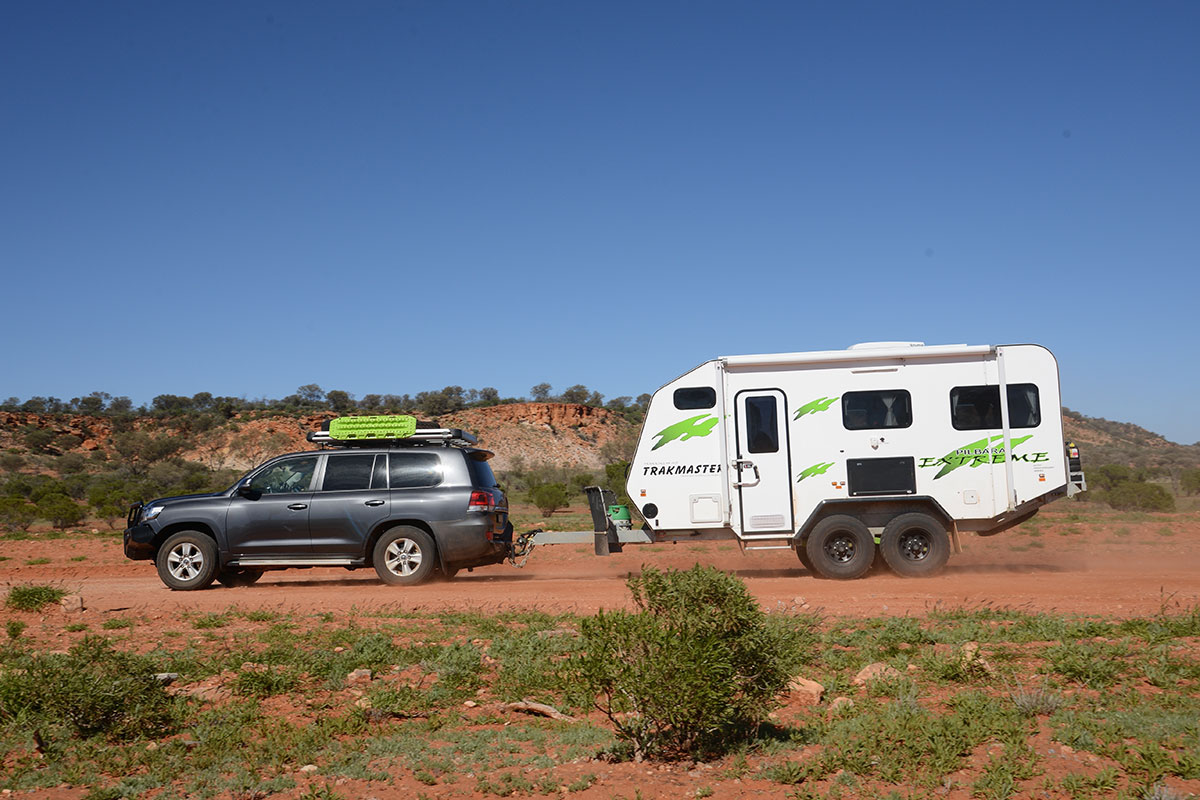
Finally, you need to be aware of your vulnerability on the road as the commander of a heavy rig. You will not be able to out-brake a car – or even most large trucks because of the additional grip they have on the road with their many tyres – so this means leaving a substantial gap between yourself and the vehicle in front.
On twisting or downhill sections, brake early in a straight line and if you feel the wheels of your caravan lock up, get off and on the brakes, rapidly to regain traction. If you have time, slacken off the current to your brake controller.
Finally remember that as a caravanner you are probably the slowest rig on the road and you will continually be passed by large B-Doubles and other travellers alike. Here I have just three words of advice: deal with it! If you do your homework and take this attitude, you will have much happier and safer travels.





